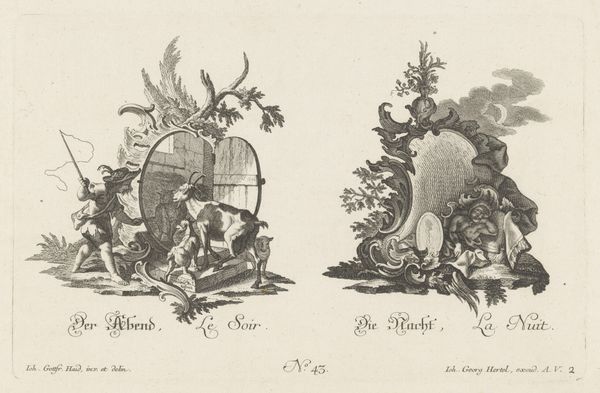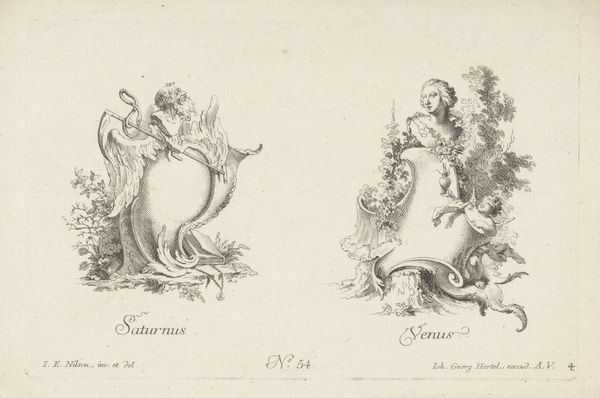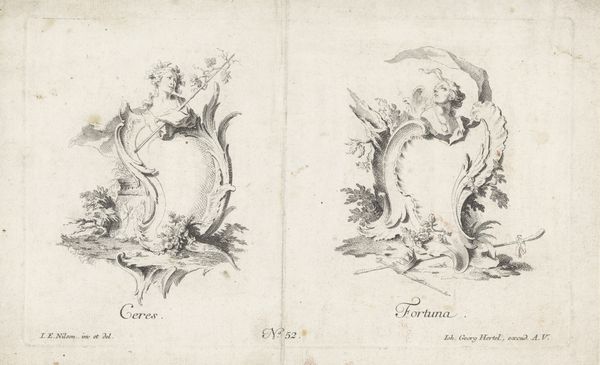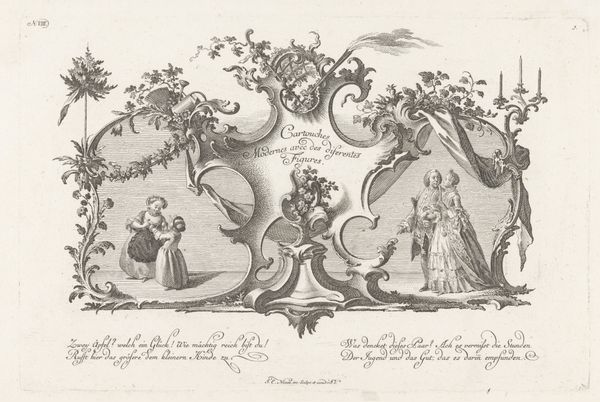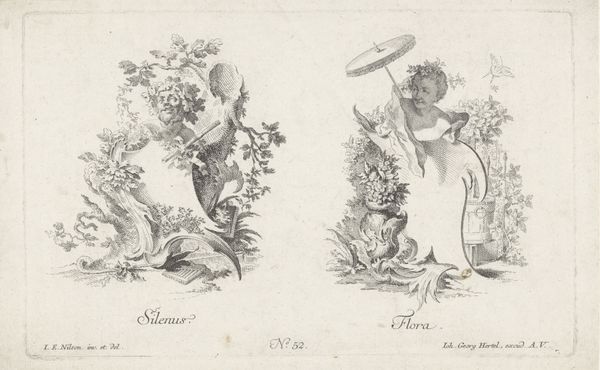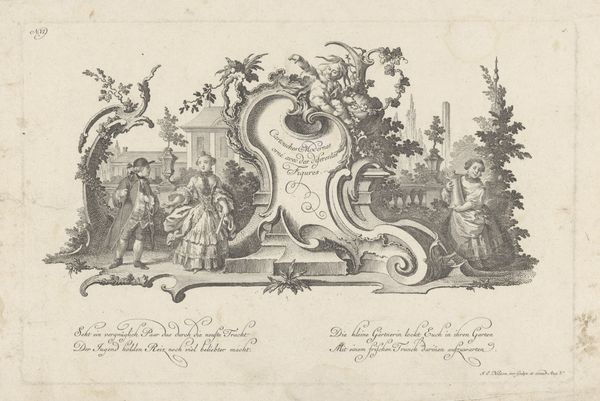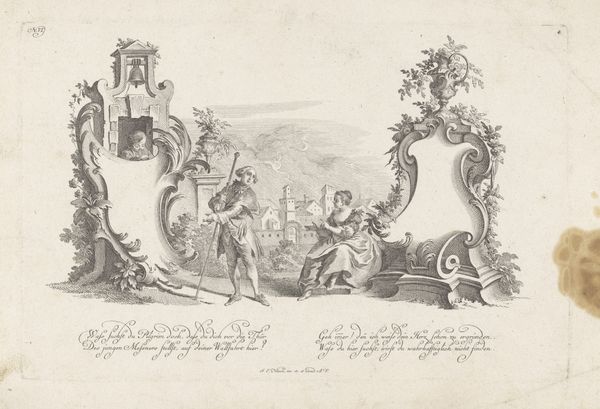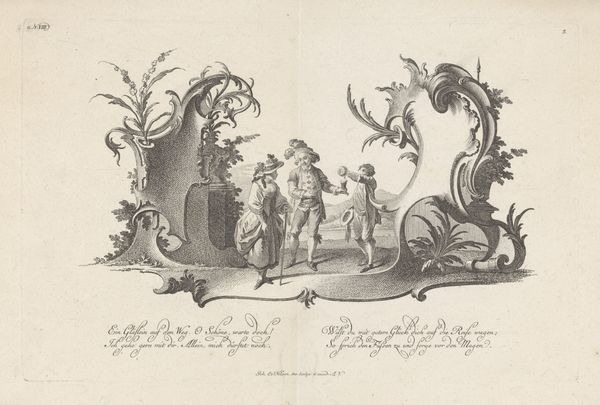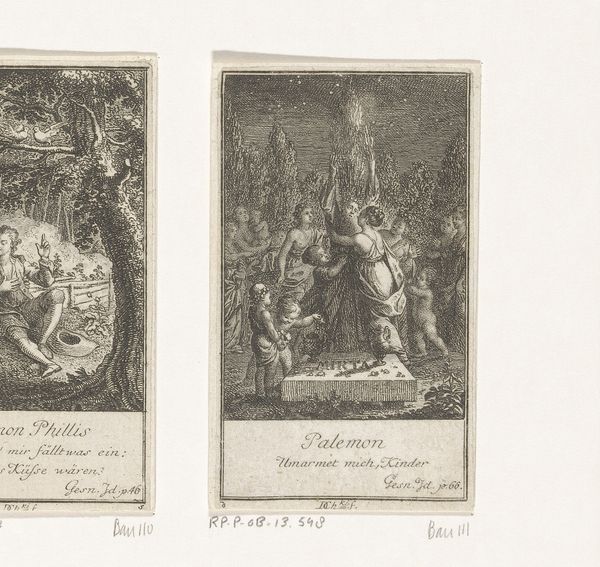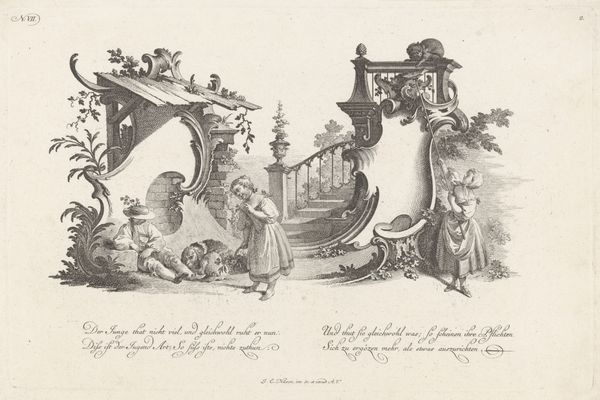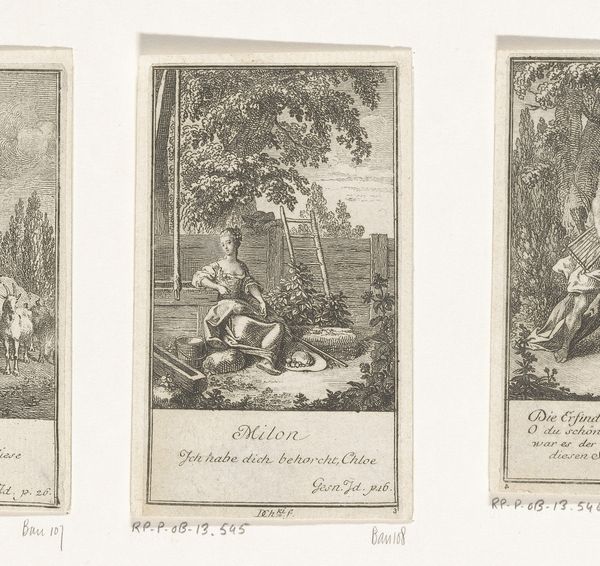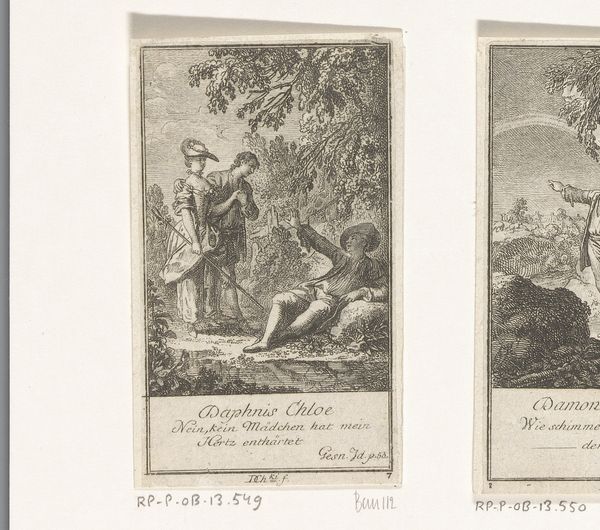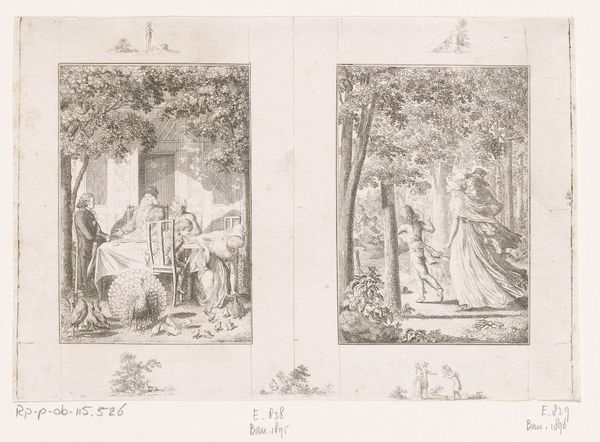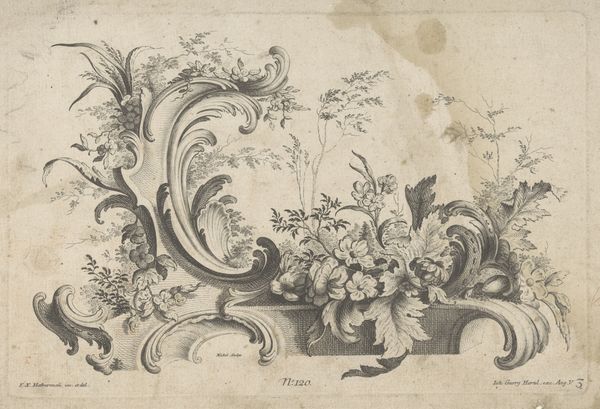
print, engraving
#
allegory
#
baroque
# print
#
old engraving style
#
history-painting
#
engraving
Dimensions: height 191 mm, width 300 mm
Copyright: Rijks Museum: Open Domain
This print, “Ochtend en middag,” or “Morning and Noon,” was made by Johann Matthias Steudlin with etching and engraving, sometime in the 18th century. The printmaking processes used here were crucial to the circulation of images in early modern Europe. The artist would have used sharp tools to cut lines into a metal plate. This painstaking work required an understanding of the qualities of the metal, and the tools used to manipulate it. Note the contrast between the delicate, flowing lines that frame the cherubic figures, and the dense, parallel marks that create areas of shadow. These differences in technique give the print depth and texture, distinguishing forms from one another. The use of printmaking emphasizes the commercial aspect of art production. By creating a reproducible image, Steudlin was able to reach a wider audience and capitalize on the demand for decorative and allegorical images. This print would have been relatively inexpensive to produce, and easy to disseminate. The amount of work involved in the production process allowed the print to appeal to consumers of all social classes.
Comments
No comments
Be the first to comment and join the conversation on the ultimate creative platform.
